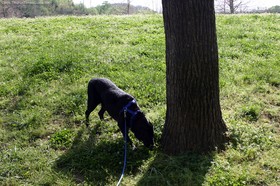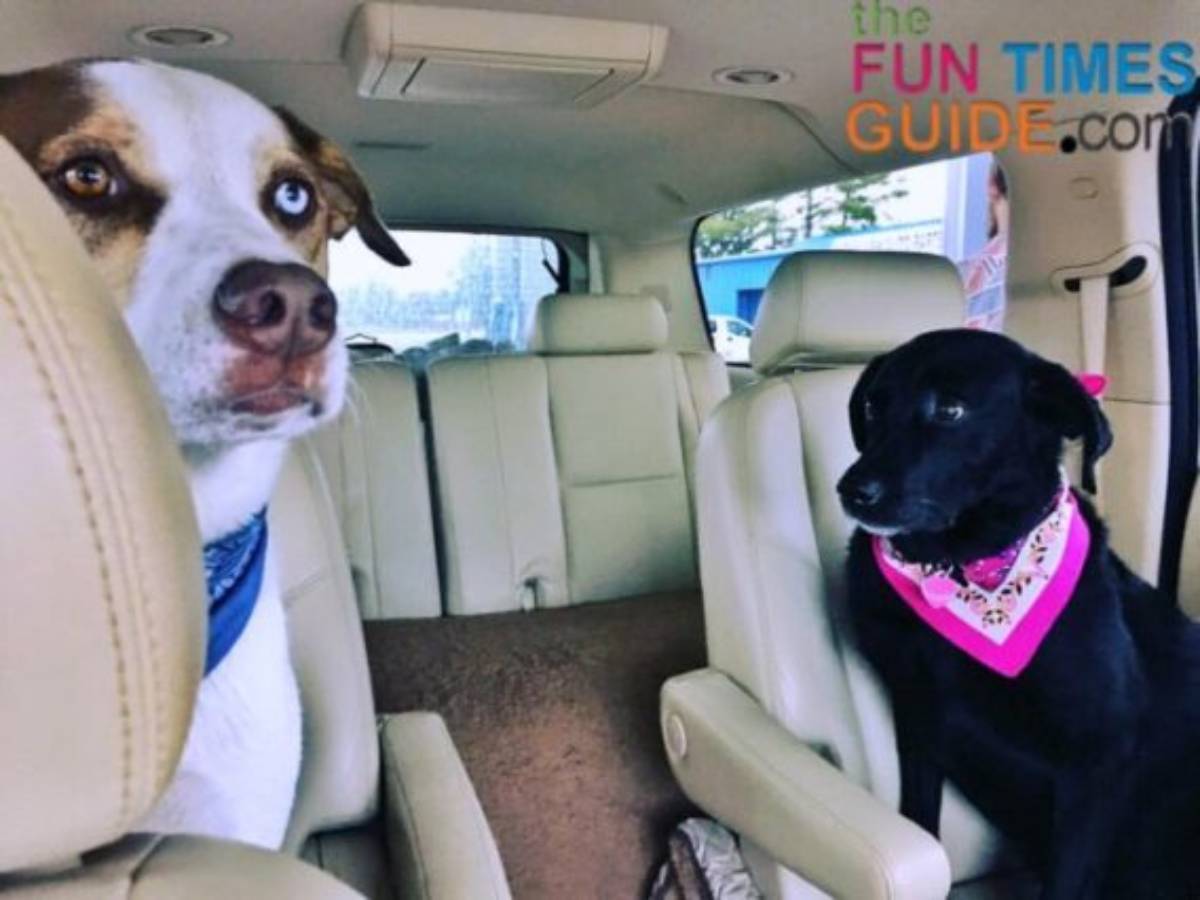 Jim and Lynnette will be moving into a new house soon. They’ve asked me for some tips to help them get Tenor through the move, with the least amount of stress.
Jim and Lynnette will be moving into a new house soon. They’ve asked me for some tips to help them get Tenor through the move, with the least amount of stress.
Here are my tips for moving with your dog…
Are you moving to a new home and not sure how to get your dog acquainted with the situation?
The biggest mistake I see people make is feeling guilty towards the dog and interpreting the dog’s behavior into human emotions.
First, the feeling guilty part puts you in an unstable emotional mindset from the dog’s point-of-view. The dog does not know guilt as an emotion and does not understand that, so all he perceives is this certain instability.
So whether you are feeling guilty because moving time usually allows less walking time, disrupts the routine of the day, or puts your pet into a new environment, your #1 task is to not feel that way.
Besides, if you are willing to assist your dog into adjusting to the new environment, what is there to feel guilty about?
Would you be willing to give up the point of view that moving is a bad thing for your animal?
What if all your dog cared about was being close to you, no matter where you are?
The first step to a successful move is for you to feel joyful about it all and assist your dog by guiding him through it all.
How To Prepare Your Dog For The Move
 During the time of packing up, keep reassuring your dog that he will be coming along.
During the time of packing up, keep reassuring your dog that he will be coming along.
You can do that by telling him: “We are all moving to a new home together.” Repeat this out loud to him several times over several days. Believe it or not, he will pick up on what you are saying.
Or, you can give that whole message in pictures, or just energetically, whatever works for you! You see, your dog speaks the language of energy — which includes pictures (your expressions) and spoken language (the words you use).
So just talk about what is going to take place, but do NOT use the language and the picture of this: “Don’t worry, you are not going to be left here.” The energy of that says: “Worry, you are going to be left here” (…which is the exact opposite of what you are trying to achieve). Dogs don’t understand the word “don’t”. Instead, they hear and perceive words very literally.
You see, dogs really don’t learn the words of our language at all. You could talk Russian to them, but what they get is the “energy” attached to each word. And the word “don’t” does not have an energy that they can understand. It is not a natural word that makes sense to a dog.
So just try to be fully aware and use language that is clear to your dog at all times. Sometimes that requires a bit of practice!
On the day of the big move, do your dog a favor and take him for a walk. For both of you, removing the energy of anxiety by moving the body will help prepare for the journey.
Calming Methods Prior To Air Travel
If your move requires your dog to be on an airplane and it is the first time, you will need to determine if a tranquilizer would help with the travel time. Not all dogs will respond well to the tranquilizer, so try to get a feel from your dog’s own behavior and energy as to whether this is the best option for your dog or not.
Sometimes, the drowsiness created by the medication will actually make a dog more nervous because he is losing control of his body. Be sure to consult with your vet if you are choosing a calming medication for your dog.
You can also use Rescue Remedy, a Bach flower remedy from the health food store. It also works great for your pets! It comes as a liquid that you can apply to your dog’s water, and as a spray that you can spray on your dog’s nose. But only do that if your dog can tolerate liquid sprayed on his face. Some dogs don’t like that at all; we don’t want to put more stress on the situation!
Getting Your Dog Adjusted To The New House
Arriving at your new house is an important time for all of you!
Most people make the mistake of letting the dog figure everything out on his own. If you have the happy-go-lucky kind of a dog, most of this will go with great ease and you might not need all the tools given here, but if your dog is nervous, shy or fearful then it will be imperative for you help him get adjusted.
First, take your dog for a brisk walk before entering the new environment. Please take a half hour for you and your dog and do both of you the favor of introducing yourselves to the new neighborhood with a walk.
 It is important to walk your dog in a way that shows your dog that you are walking him and not the other way around. So walk your dog with a loose leash, correcting him if he starts to pull. Allow him to sniff along the way, but only when you decide that it is time to sniff. You don’t want your dog to be in control of the situation and dragging you to the places that he would like to find.
It is important to walk your dog in a way that shows your dog that you are walking him and not the other way around. So walk your dog with a loose leash, correcting him if he starts to pull. Allow him to sniff along the way, but only when you decide that it is time to sniff. You don’t want your dog to be in control of the situation and dragging you to the places that he would like to find.
Again, don’t feel guilty, or bad. The dog’s nose is much better than yours, and he can still sniff things simply by walking past them.
So after your half hour walk, go up to your new house and enter it calmly with your dog following you inside (rather than letting your dog lead the way). Keep him on the leash and show him all around the house that way.
Ask everybody to not be excited right now and just show your dog everything there is to see about this new environment. Show him where his place to sleep will be, the food and water place, the crate, etc.
If your dog is quite nervous about all this, the best thing to do is keep him on a leash (tie him to you if you have to) and just take him along — with you in full control and leading the way at all times. Remember, a dog’s fear is greatly reduced if
he feels that you are in control of the situation (rather than him having to figure everything out on his own).
If it does not stress your dog, try confining him to a small area that has his bed in it, or the crate. If your dog is nervous, do not let him run through the house freely. It will not help the nervousness!
In those first few days after moving into a new house, it is important that you lead the way for your dog. This is how he will be able to make the “right” decision about the new living situation. So the calmer you are and the more you are willing to guide your dog, the easier it will be… for you and your dog!
Need some advice or training tips regarding your own dog? I would be happy to help you solve dog training and behavior issues right over the phone — just like I was able to help Jim and Lynnette with their dog who used to be anxious and nervous around people.



